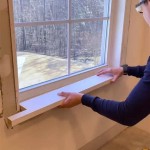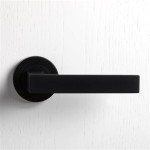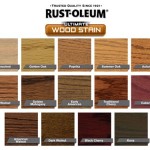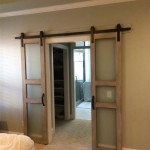How Much To Paint the Interior of a 2000 Sq Ft Home
Determining the cost to paint the interior of a 2000 square foot home involves several factors that contribute to the final price. This article aims to provide a comprehensive overview of these factors, offering insights into how to estimate the costs associated with such a project. The information presented here is intended to assist homeowners in budgeting and planning for interior painting projects.
The primary cost associated with painting any interior space is labor. Labor costs can fluctuate based on geographic location, the experience level of the painters, and the complexity of the job. More experienced painters, while potentially charging higher hourly rates, may complete the project more efficiently, ultimately saving time and possibly money. The complexity of the job refers to factors like the height of ceilings, intricate trim work, and the need for extensive surface preparation. Geographic location plays a significant role due to varying cost of living standards and local market demands. Areas with higher costs of living generally see higher labor rates for painting services.
Beyond labor, the cost of paint itself is a major consideration. The quality of paint selected directly influences the price. Higher quality paints generally offer better coverage, durability, and color retention. These paints may require fewer coats to achieve the desired finish, potentially offsetting the initial higher cost. Different paint finishes, such as matte, eggshell, satin, semi-gloss, and gloss, also come with varying price points, with higher gloss levels often being more expensive due to their durability and washability.
Surface preparation is another critical aspect that impacts the overall cost. This includes tasks such as patching holes and cracks, sanding rough surfaces, cleaning walls to remove dirt and grease, and applying primer. The amount of preparation required depends on the existing condition of the walls. Heavily damaged walls will necessitate more extensive preparation, increasing both labor and material costs. For example, removing old wallpaper or repairing water damage can add significantly to the overall expense.
Furthermore, accessibility to the areas being painted can influence labor costs. Rooms with high ceilings or difficult-to-reach areas may require specialized equipment, such as scaffolding or extended ladders, which adds to the time and effort required to complete the project. Similarly, if furniture needs to be moved or protected, this will also contribute to the labor costs.
The baseboard and trim work associated with the interior impact the overall cost. The complexities of this baseboard and trim vary greatly. Some trim work may require more extensive cleaning, preparation, and painting than others. Intricate trim details will require longer application times, driving up the total amount.
Key Point 1: Assessing the Scope of Work and Labor Costs
Accurately assessing the scope of work involved is crucial for estimating the cost of painting a 2000 square foot home. This involves carefully evaluating each room to determine the square footage of wall space, the condition of the walls, the amount of trim work, and any specific challenges presented by the layout or design of the house. A typical 2000 square foot home might have around 8000 square feet of wall space to paint, but this can vary depending on the number of rooms, the height of the ceilings, and the presence of large windows or doorways. Once the wall space is determined, the condition of the walls need to be assessed to calculate how much surface preparation will be involved.
Labor costs are typically calculated on an hourly basis or as a flat rate per project. Hourly rates for professional painters can range from $30 to $70 or more, depending on the factors mentioned previously. A flat rate is often preferred for larger projects as it provides a more predictable cost estimate. Flat rates are calculated from the total anticipated labor hours, based on the hourly rate in the area. To obtain an accurate estimate, it is advisable to obtain multiple quotes from different painting contractors. These quotes should detail the scope of work, the estimated labor hours, and the materials costs. Comparing these quotes allows homeowners to make informed decisions and choose a contractor that offers a balance of quality and affordability.
When evaluating quotes, it is important to inquire about the contractor's experience, insurance coverage, and warranty policies. Choosing a reputable and insured contractor provides protection against potential damages or liabilities that may arise during the project. A comprehensive warranty policy ensures that any defects or issues with the paint job will be addressed promptly and professionally.
Therefore, one needs to have a detailed assessment of the room to be painted including things like the height and length of the walls, to calculating the amount of trim work, and the amount of doors and windows that you need to paint.
Key Point 2: Paint Quality and Quantity Considerations
The choice of paint significantly affects both the cost and the final outcome of the painting project. Higher quality paints offer superior coverage, durability, and color retention compared to cheaper alternatives. While the initial cost may be higher, these paints often require fewer coats to achieve the desired finish, potentially saving time and money in the long run. Furthermore, high-quality paints are more resistant to fading, cracking, and peeling, ensuring that the paint job lasts longer and requires less frequent maintenance.
Different paint finishes are suited for different areas of the home. Matte finishes are ideal for low-traffic areas such as bedrooms and living rooms, as they provide a smooth, non-reflective surface that helps to conceal imperfections. Eggshell finishes are slightly more durable and easier to clean, making them suitable for hallways and dining rooms. Satin finishes offer a subtle sheen and are more resistant to moisture, making them a good choice for kitchens and bathrooms. Semi-gloss and gloss finishes are the most durable and easiest to clean, making them ideal for trim work, doors, and high-traffic areas. These durable paint finishes are more resistant to water.
Estimating the quantity of paint required for a 2000 square foot home involves calculating the total wall space and accounting for the number of coats needed. Typically, one gallon of paint covers approximately 350 to 400 square feet. For a home with 8000 square feet of wall space, approximately 20 to 23 gallons of paint may be required for one coat. If two coats are desired, the quantity should be doubled.
It is generally advisable to purchase slightly more paint than estimated to account for any unexpected needs or touch-ups. Unused paint can be stored properly for future use, provided that it is sealed tightly and stored in a cool, dry place. Consulting with a paint specialist or contractor can provide valuable guidance on selecting the appropriate type and quantity of paint for the specific project.
Key Point 3: Surface Preparation and Additional Costs
Surface preparation is often the most time-consuming and labor-intensive aspect of a painting project, but it is essential for achieving a smooth and long-lasting finish. This includes tasks such as patching holes and cracks, sanding rough surfaces, cleaning walls to remove dirt and grease, and applying primer. The amount of preparation required depends on the existing condition of the walls. Walls with extensive damage or imperfections will require more extensive preparation, increasing both labor and material costs.
Patching holes and cracks involves using spackle or joint compound to fill in any imperfections. Larger holes may require multiple applications and sanding to achieve a smooth, even surface. Sanding is also necessary to remove any rough textures or peeling paint. Cleaning walls is crucial for ensuring that the paint adheres properly. This can be done using a mild detergent and water, followed by a thorough rinsing.
Applying primer is an important step that helps to improve adhesion, block stains, and create a uniform surface for the paint. Primer is especially important when painting over dark colors or glossy surfaces. Different types of primers are available for different applications, such as oil-based primers for blocking stains and water-based primers for general use. Additionally, the cost of surface preparation materials, such as spackle, sandpaper, cleaning supplies, and primer, should be factored into the overall budget.
Certain painting companies will be more thorough with the surface preparation. Some more expensive companies will make sure that your walls are clean and smooth and sanded properly before painting. Other companies will just give the wall a quick wipe and then paint.
In addition to labor, the cost of paint itself is a major consideration. The quality of paint selected directly influences the price. Higher quality paints generally offer better coverage, durability, and color retention. These paints may require fewer coats to achieve the desired finish, potentially offsetting the initial higher cost. Different paint finishes, such as matte, eggshell, satin, semi-gloss, and gloss, also come with varying price points, with higher gloss levels often being more expensive due to their durability and washability.
Furthermore, additional costs may arise from unforeseen circumstances, such as the discovery of hidden damage or the need for specialized equipment. It is prudent to budget for these contingencies to avoid unexpected expenses. These surprise costs are what make painting projects so hard to calculate at times. Therefore, it is essential to have a conversation with your contractor to understand all the risks and considerations that they will be taking into account when working on the project.
The cost to paint the interior of a 2000 square foot home may range from $4,000 to $10,000 or more, depending on these factors. This is only an estimate because the cost may vary based on specific conditions of the project.

Cost To Paint A House Whole Painting Fixr

How Much Does It Cost To Paint The Interior Of A House In Paintrite Pros

How Much Does Interior House Painting Cost A New Leaf

Average Cost To Paint A House Coloradopainting Com

Cost To Paint A House Whole Painting Fixr

2024 Interior Painting Costs Average Cost To Paint Of House

How Much Does It Cost To Paint A 2000 Sq Ft House

How Much Does Interior House Painting Cost In 2024 Forbes Home

2024 Interior Painting Costs Average Cost To Paint Of House

How Much Does It Cost To Paint The Interior Of A House In Paintrite Pros
Related Posts








